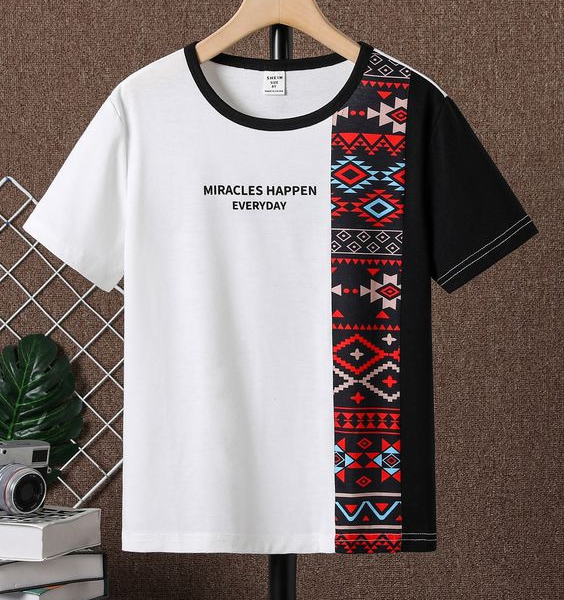T-shirt design is an exciting and creative field that allows individuals to express their unique style and ideas. Whether you’re designing for personal use, a brand, or a client, mastering the art of T-shirt design involves a blend of artistic skill, technical knowledge, and marketing savvy. In this blog, we’ll delve into the essential elements of T-shirt design, from concept to creation, and offer tips to help you refine your creativity and produce stunning designs. Softnix is an agency which is providing you t-shirt design services
Understanding the Basics of T-Shirt Design
The Importance of a Strong Concept
Every great T-shirt design starts with a strong concept. Your concept is the foundation of your design and should reflect the message or aesthetic you want to convey. Spend time brainstorming and sketching out ideas before settling on the one that best captures your vision.
Key Steps:
Brainstorming: Jot down ideas, themes, and elements that resonate with your target audience.
Research: Look at current trends, popular designs, and successful brands for inspiration.
Sketching: Create rough sketches to visualize your ideas and refine them over time.
Choosing the Right T-Shirt Style and Fabric
The style and fabric of the T-shirt play a crucial role in how your design will look and feel. Consider the following when selecting a T-shirt:
Style: Options include crew neck, V-neck, long sleeve, short sleeve, fitted, and oversized.
Fabric: Common choices are cotton, polyester, blends, and specialty fabrics like organic cotton or bamboo.
The choice of style and fabric can influence the design process, as certain designs may look better on specific types of shirts.
Design Principles and Techniques
Color Theory and Selection
Color plays a vital role in T-shirt design, affecting both aesthetic appeal and emotional impact. Understanding color theory can help you choose color schemes that enhance your design.
Tips:
Color Wheel: Use the color wheel to select complementary, analogous, or triadic color schemes.
Contrast: Ensure there is enough contrast between the design and the T-shirt color to make the design stand out.
Brand Colors: If designing for a brand, use their color palette to maintain consistency.
Typography and Font Selection
Typography is another critical element of T-shirt design. The right font can convey your message effectively and add to the overall appeal of the design.
Considerations:
Font Style: Choose fonts that match the theme and tone of your design. For example, playful designs might use fun, whimsical fonts, while more serious designs might use clean, minimalist fonts.
Readability: Ensure that text is easily readable from a distance.
Pairing Fonts: If using multiple fonts, make sure they complement each other without clashing.
Illustrations and Graphics
Illustrations and graphics can range from simple icons to complex artwork. Whether hand-drawing your illustrations or using digital tools, ensure they are high quality and relevant to your concept.
Techniques:
Vector Graphics: Use vector graphics for scalability and clarity. Tools like Adobe Illustrator are ideal for creating vector designs.
Layering: Use layers to build complexity and depth in your design.
Texture: Add texture to give your design a more tactile and dynamic look.
Technical Aspects of T-Shirt Design
Design Software and Tools
Using the right software and tools is essential for creating professional-quality T-shirt designs. Popular design tools include:
Adobe Illustrator: Ideal for creating vector graphics and complex designs.
Adobe Photoshop: Great for photo-based designs and adding effects.
CorelDRAW: Another powerful vector graphic design software.
Inkscape: A free, open-source vector graphic design tool.
Understanding Print Methods
Different printing methods can affect the final outcome of your design. The most common T-shirt printing methods are:
Screen Printing: Best for bulk orders and designs with few colors. It produces durable and vibrant prints.
Direct-to-Garment (DTG): Ideal for small orders and designs with many colors or intricate details. It prints directly onto the fabric.
Heat Transfer: Uses heat to transfer the design from a paper or vinyl to the T-shirt. Suitable for small orders and custom designs.
Sublimation: Used for polyester fabrics, this method involves transferring dye onto the fabric, resulting in vibrant and long-lasting prints.
Marketing and Selling Your T-Shirt Designs
Building a Brand
Creating a strong brand identity can help your T-shirt designs stand out in a crowded market. Consider the following when building your brand:
Logo and Branding: Develop a memorable logo and consistent branding elements.
Storytelling: Share the story behind your designs to create a connection with your audience.
Social Media: Use platforms like Instagram, Facebook, and Pinterest to showcase your designs and engage with potential customers.
Setting Up an Online Store
To sell your T-shirt designs, setting up an online store is crucial. Platforms like Shopify, Etsy, and Printful make it easy to start selling your designs.
Steps:
Choose a Platform: Select an e-commerce platform that fits your needs.
Create Product Listings: Write compelling product descriptions and use high-quality images.
Promote Your Store: Use SEO, social media marketing, and email marketing to drive traffic to your store.
Conclusion
Mastering the art of T-shirt design involves a combination of creativity, technical skill, and marketing savvy. By understanding the basics, applying design principles, leveraging the right tools, and effectively marketing your designs, you can create stunning T-shirts that resonate with your audience and drive sales. Whether you’re designing for fun or looking to build a successful business, the key is to keep refining your creativity and staying up-to-date with industry trends. Happy designing





